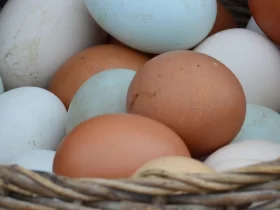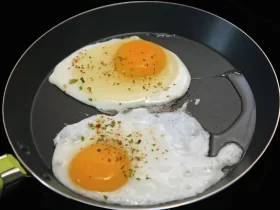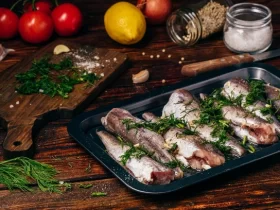How to Dehydrate Using Your Oven
Welcome to our guide on how to dehydrate foods using your oven! Dehydrating food is a fantastic way to preserve it for longer periods, and the oven can be a great tool for this purpose. Whether you want to make your own dried fruits, jerky, or herbs, using your oven can be a convenient and effective method. In this article, we’ll walk you through the steps to dehydrate using your oven, so you can enjoy delicious, shelf-stable treats at home.
Choosing the Right Foods
Not all foods are suitable for dehydration. When selecting foods to dehydrate, it’s important to choose ones that are fresh and in good condition. Some popular options for dehydrating include:
- Fruits such as apples, bananas, and berries
- Vegetables like tomatoes, bell peppers, and zucchini
- Herbs such as basil, oregano, and mint
- Meats for making jerky, such as beef or turkey
Before you start dehydrating, make sure to wash and prepare your foods as needed. For fruits and vegetables, it’s often best to slice them into uniform pieces to ensure even drying.
Prepping Your Oven
Now that you’ve chosen your foods, it’s time to prep your oven for dehydration. Here’s what you’ll need to do:
- Preheat your oven to the lowest temperature setting, ideally between 140-170°F (60-75°C). This low and slow approach is key to dehydrating effectively.
- Place a sheet of parchment paper or a silicone baking mat on your oven racks to prevent foods from sticking.
- Set up a cooling rack on top of a baking sheet. This will allow air to circulate around the food for even drying.
Dehydrating Your Foods
Now it’s time to start dehydrating! Follow these steps for successful dehydration using your oven:
- Arrange your prepared foods in a single layer on the cooling rack. Make sure to leave space between pieces for air to flow.
- Place the baking sheet with the cooling rack and foods into the preheated oven.
- Prop the oven door open slightly to allow moisture to escape. You can use a wooden spoon or oven-safe object to keep the door ajar.
- Let the foods dehydrate for the recommended time, which can vary depending on the type of food. Fruits and vegetables may take 6-12 hours, while meats can take 4-6 hours.
- Check on the foods periodically and rotate the trays if needed for even drying.
Storing Your Dehydrated Foods
Once your foods are fully dehydrated, it’s important to store them properly to maintain their quality. Here are some tips for storing your dehydrated foods:
- Allow the foods to cool completely before storing them in airtight containers. This helps prevent condensation and spoilage.
- Store your dehydrated foods in a cool, dark place to maintain their flavor and shelf life. A pantry or cupboard works well for this purpose.
- Label your containers with the date and type of food to keep track of freshness.
- Enjoy your dehydrated foods within a few months for the best quality, or up to a year for most items.
By following these simple steps, you can successfully dehydrate a variety of foods using your oven. Whether you’re making snacks for hiking, stocking your pantry with dried herbs, or preserving seasonal fruits, using your oven for dehydration is a convenient and accessible option. Happy dehydrating!
Explore More Dehydrated Delights and Practical Uses
Ready to put your new dehydration skills to the test? Dive into a variety of recipes specifically designed for oven dehydration. For a savory touch in your cooking, try making the Sun-Dried Tomato Pesto or enhance your snack lineup with Crispy Kale Chips. If you’re a fan of sweeter treats, don’t miss out on the Oven-Dried Apple Chips. These recipes not only maximize the flavor of your ingredients but also offer a healthier alternative to store-bought snacks. I recommend starting with the Turkey Jerky, an excellent protein-rich snack that showcases the benefits of oven dehydration. Each recipe provides a unique way to utilize your oven for drying, ensuring every meal or snack is packed with intensified flavor and texture.
-
What are the benefits of dehydrating food using an oven?
Dehydrating food using an oven is a convenient way to preserve fruits, vegetables, and herbs. It allows you to enjoy the benefits of dried foods without needing to invest in a specialized dehydrator. Additionally, using an oven can be more cost-effective and space-efficient for those who do not have room for a separate dehydrating appliance.
-
What types of food can be dehydrated using an oven?
A wide variety of foods can be dehydrated using an oven, including fruits (such as apples, bananas, and berries), vegetables (like tomatoes, peppers, and onions), and herbs (such as basil, mint, and oregano). Additionally, you can also dehydrate meats, fish, and even make jerky using an oven.
-
What is the process for dehydrating food using an oven?
To dehydrate food using an oven, start by slicing the food into thin, uniform pieces. Arrange the pieces on a baking sheet in a single layer, making sure they do not touch or overlap. Then, set the oven to its lowest temperature (usually around 140-170°F or 60-75°C) and place the baking sheet inside. Prop the oven door open slightly to allow moisture to escape. Depending on the food and the oven temperature, dehydration can take several hours to a full day.
-
Are there any tips for successful dehydration using an oven?
It’s important to check the food periodically during the dehydration process to ensure even drying. You can also rotate the baking sheets or flip the food to promote uniform drying. Additionally, using a food thermometer to monitor the oven temperature can help ensure that it stays within the optimal range for dehydration.
-
How do you store dehydrated food after using an oven?
Once the food is fully dehydrated, allow it to cool to room temperature before transferring it to airtight containers or resealable bags. Store the dehydrated food in a cool, dry, and dark place to maintain its quality. Properly stored dehydrated food can last for several months to a year, depending on the type of food and the storage conditions.










Leave a Reply